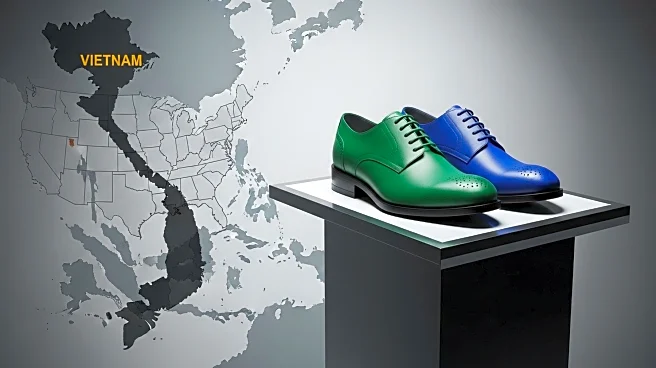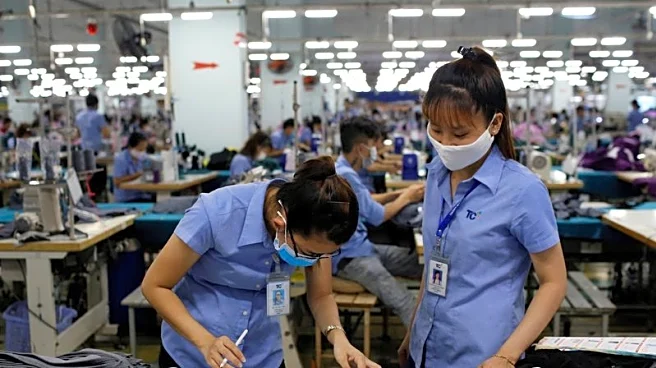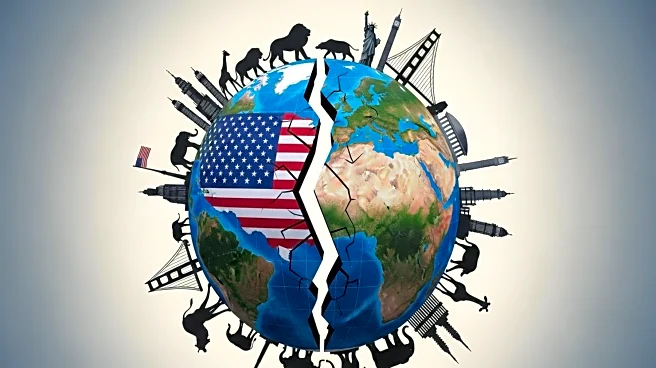What's Happening?
Vietnam's footwear exports to the United States fell by 27 percent in September, following the imposition of tariffs by the U.S. government. This decline represents the steepest drop among all sectors, with textile exports also decreasing by 20 percent and phone components by 24.38 percent. Despite these sectoral declines, Vietnam's overall exports to the U.S. only decreased by 1.5 percent, thanks to gains in coffee and machinery exports. President Donald Trump announced a trade deal with Vietnam, which includes a 20 percent import tariff, following weeks of diplomatic negotiations. The tariffs were set to increase further if a deal had not been reached.
Why It's Important?
The tariffs on Vietnamese exports are part of a broader trade strategy by the Trump administration to address trade imbalances and protect U.S. industries. The significant drop in footwear exports highlights the vulnerability of Vietnam's export sectors to U.S. trade policies. The tariffs could lead to increased costs for U.S. consumers and businesses reliant on Vietnamese goods, potentially affecting retail prices and supply chains. The trade deal with Vietnam, while averting higher tariffs, still imposes significant duties that could impact bilateral trade relations and economic growth in Vietnam.
What's Next?
The trade deal between the U.S. and Vietnam may lead to further negotiations to address the tariffs' impact on specific sectors. Vietnamese exporters and U.S. importers will need to adapt to the new trade environment, potentially seeking alternative markets or adjusting supply chains. The situation may also influence future trade policies and agreements between the two countries, as well as broader U.S. trade strategies in the Asia-Pacific region.












